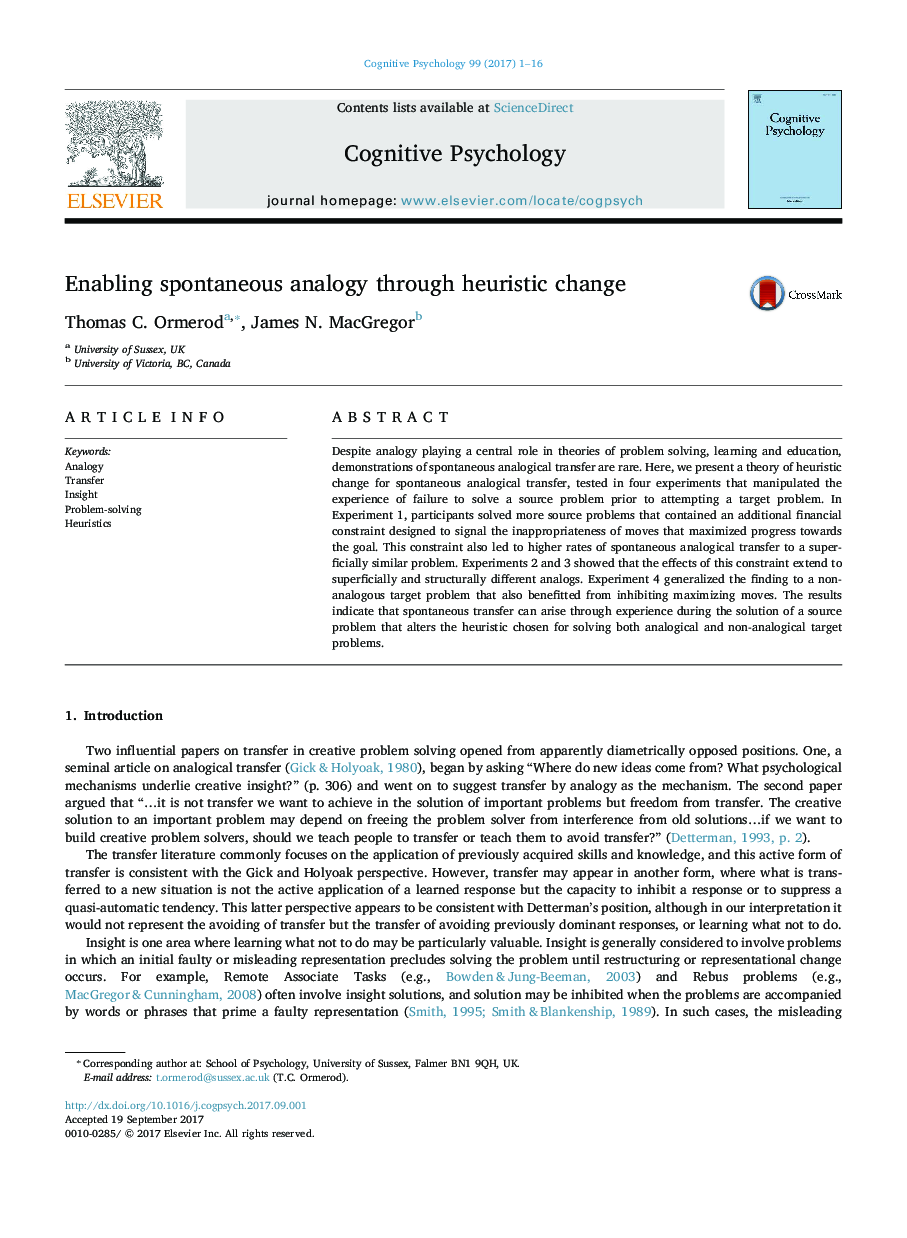| Article ID | Journal | Published Year | Pages | File Type |
|---|---|---|---|---|
| 7272689 | Cognitive Psychology | 2017 | 16 Pages |
Abstract
Despite analogy playing a central role in theories of problem solving, learning and education, demonstrations of spontaneous analogical transfer are rare. Here, we present a theory of heuristic change for spontaneous analogical transfer, tested in four experiments that manipulated the experience of failure to solve a source problem prior to attempting a target problem. In Experiment 1, participants solved more source problems that contained an additional financial constraint designed to signal the inappropriateness of moves that maximized progress towards the goal. This constraint also led to higher rates of spontaneous analogical transfer to a superficially similar problem. Experiments 2 and 3 showed that the effects of this constraint extend to superficially and structurally different analogs. Experiment 4 generalized the finding to a non-analogous target problem that also benefitted from inhibiting maximizing moves. The results indicate that spontaneous transfer can arise through experience during the solution of a source problem that alters the heuristic chosen for solving both analogical and non-analogical target problems.
Related Topics
Life Sciences
Neuroscience
Cognitive Neuroscience
Authors
Thomas C. Ormerod, James N. MacGregor,
